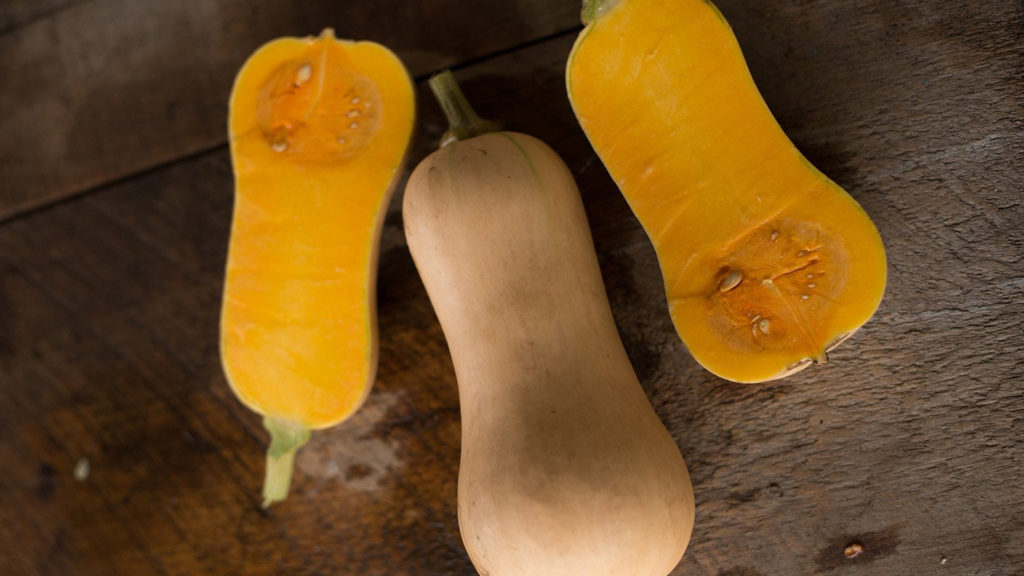In the dark days of autumn and winter, there is a tendency to turn to food for solace. Done indiscriminately, this can be a recipe for disaster. However, by choosing foods which combine both comfort and nutrition, and by making meals an opportunity for conviviality, eating can be an experience which nurtures mind, emotions and body.
One especially auspicious “comfort” food for this time of year is winter squash. The flavor of winter squash ranges from mildly to intensely sweet. In Chinese medicine it is considered a warming food that is medicinal to the spleen-pancreas and stomach. Winter squash is exceptionally high in complex carbohydrates and is considered medicinal for diabetics and those with stomach problems. It is a good source of vitamins A, C, potassium, iron and magnesium.
The cheerful orange pumpkins we see on porches at this time of year are a variety of winter squash, although the large jack-o-lantern pumpkins are blandly flavored and not recommended for eating. The smaller Sugar Pie pumpkins are, on the other hand, deliciously sweet. When baked and pureed with butter, they are a food fit for a king.
Other popular winter squashes include acorn squash, which is shaped like a deeply ribbed acorn with a dark green skin. Acorn squash has a pale yellow flesh that is drier and less dense than some other varieties. Butternut squash has a creamy flavor and a soft skin that’s easy to peel, which makes it a favorite in soups and savory stews. Kabocha is a round Japanese variety that’s flaky and sweet, ideal for baking. Delicata is deliciously sweet-its edible skin makes this slender squash perfect for roasting or grilling.
When buying, look for squash with deep color that is heavy for its size. Winter squash need not be refrigerated. It will keep fine at room temperature for several weeks. Winter squash can be baked, stuffed, simmered in a little water, steamed or fried. Don’t boil it covered with water, though, because it washes out the flavor. Smaller squash like Acorn can be halved, seeded and baked as is. If your squash is larger like most Butternuts or Kabochas, you can cut it into smaller pieces to reduce your cooking time. Mash up cooked squash and add a little butter and perhaps a few dried cranberries for a colorful side dish which will brighten your plate and your mood.
Or for something a little (but not much) more elaborate, try the following Roasted Pumpkin Soup. This recipe can also be made using Butternut or Kabocha squash instead of pumpkin.
Roasted Pumpkin Soup 1 sugar pie pumpkin (about 3 lbs)
Olive oil
Salt and pepper
2 sprigs thyme
4 cloves garlic
1 quart chicken stock
Optional: butterPreheat oven to 350 degrees. Cut pumpkin in half and scrape out seeds and pith. Oil the halves with olive oil and season generously with salt and pepper. Place cut side down on a baking sheet with the sprig of thyme and 2 unpeeled cloves of garlic under each seed cavity. Roast in the oven for 45 minutes, or until completely tender. When cool enough to handle, scoop out the flesh and add the pulp to a soup pot along with the roasted garlic, squeezed out of its skin. Mash together with a heavy whisk or a wooden spoon, add the chicken stock, and heat to a simmer. Taste and correct seasoning. For a little richer soup, add some butter. Serve with croutons and perhaps a little grated cheese.
Recipe adapted from Chez Panisse Vegetables by Alice Waters


